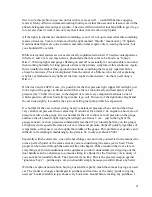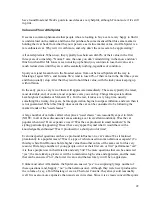
9
introduced. At the time it was merely the most radical expression of a twin-pod theme carried
throughout the 105 series. This was considered a pretty bizarre setup as late as 1985 (the last year
it was produced), but it seems to have aged very well... it certainly doesn't look "antique", as the
metal-dashed Duettos do, and seems more aesthetically pleasing than the similar executions of
this theme in the coupe and the berlina.
A completely integrated center console, holding the ventilation, wiper, dash lighting controls, and
some indicator lights, was introduced as well. However, for most of the Series 2 (and 2a) run, the
interior retained rubber mats and vinyl seat covers, and only came in black.
In 1971 Alfa introduced yet another enlargement of the twincam engine, the (now ubiquitous) 2
liter. Despite this fact, very, very few 2 liter Spiders seem to have been produced in 1971. In one
book only 2 are listed as having been imported into the US. It wasn
“
t until 1972 that the 2 liter
motor was produced in large numbers.
While this motor, in its pre-emissions form, produced (depending on who you believe) 129 to
135 hp (one source claims 155 hp for the European version), it has always had problems with the
head gasket. Unlike other motors from other manufacturers, failing Alfa 2 liter head gaskets don't
leak coolant into the cylinders, but rather first leak oil into the coolant, and then coolant into the
oil (with potential major damage to the engine). This problem has never been completely solved,
although advances in gasket design and the introduction of roller-pin-and-square-cut-o-ring kits
have helped a great deal. The model designation of the cars changed around this time as well,
becoming "115.XX" Spiders (the XX being replaced by various numbers, depending on the trim
level of the cars and their relationship to the rest of the Alfa Romeo line). They will be referred to
as such through the rest of this document.
In my own opinion, the Spider
“
s overall combination of performance, refinement, and desirability
peaked during the 1970-1974 years (in the US, at any rate). Which year is mostly a matter of
taste. The 1750 engines, while less powerful in raw numbers, are a bit "zippier" and smoother
than their 2.0L counterparts. They also do not have the head gasket problems of the larger
motors.
However, 130ish horsepower out of a 117 cubic inch engine (the 2 liter) is quite impressive to
your typical speed-shop crowd, and, again in my own experience, there are very, very few
modern non-turbo cars with fewer than 8 cylinders that can keep up with a well-tuned
…
74 Spider.
Unlike later years, these cars came hot from the factory.
The owners of Series 2 cars are also in a happy middle ground right now. The cars are clean,
high-performance machines that will probably appreciate noticeably when the next "used classic"
car boom comes along in about 5 years. Because the series was produced in Europe for another 7
years, most exterior trim is readily available (albeit for a price, in some cases). With the
exception of the dash and center console, the interior trim is a complete match for the Duetto,
whose boost in value has spawned a cottage industry reproducing like-new original interior
fittings. The dash, the instruments, many body panels (including the all-important floorpans... see
below), and nearly all the mechanicals are shared with cars produced as few as five years ago.










































